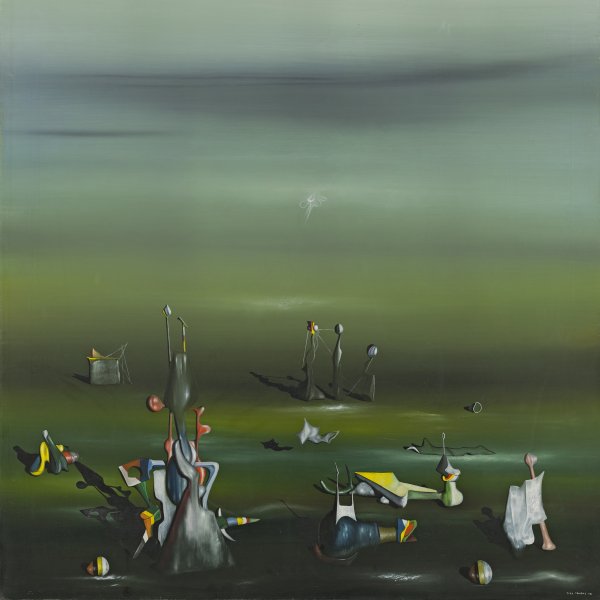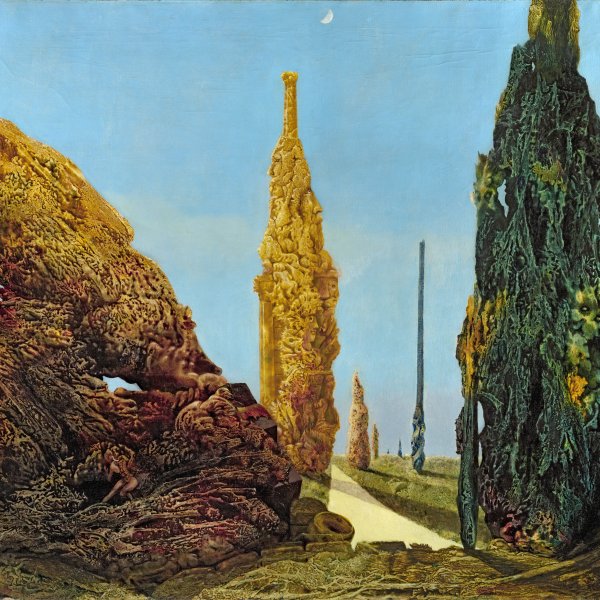Dream Caused by the Flight of a Bee around a Pomegranate a Second before Waking
The sleeping figure of Gala, Dalí’s wife and muse, floats above a rock in a tranquil marine landscape. Beside her naked body, two drops of water, a pomegranate and a bee are also airborne. Gala’s dream, prompted by the buzzing of the bee, appears in the upper part of the canvas; there, from an exploding pomegranate shoots out a fish, from whose mouth two ferocious tigers emerge together with a bayonet which, one second later, will wake Gala from her restful sleep. Although by 1944 Dalí was already living in America and devoting little time to painting, this canvas marks a return to his ‘paranoiac-critical method.’ His view—based on Freudian theories—that images were open to multiple interpretations made him one of the leading members of the Surrealist group.
In this “hand-painted dream photograph” — as Dalí generally called his paintings — we find a seascape of distant horizons and calm waters, perhaps Port Lligat, amidst which Gala, once again, is the subject of the scene. Next to the naked body of the sleeping woman, which levitates above a flat rock that floats above the sea, Dalí depicts two suspended droplets of water and a pomegranate, a Christian symbol of fertility and resurrection. Above her flies a bee, an insect that traditionally symbolises the Virgin. In Gala’s mind the buzzing of the bee is translated into a dream in which a huge fish bursts out of the pomegranate in the upper part, and in turn spews out two menacing tigers and a bayonet; a second later the bayonet will sting Gala in the arm. Above them an elephant with long flamingo legs, found in other compositions of the period, carries on its back an obelisk — like Bernini’s elephant in the Piazza Santa Maria sopra Minerva in Rome — which symbolises the power of the pope.
Christopher Green has analysed at length the relationship between this picture and Freud’s texts on the interpretation of dreams, which are so essential to understanding Dalí’s art. It is no coincidence that the “paranoiac-critical method” — invented by the painter on the basis of Freud’s theories on dream interpretation, according to which each image or association of images could be read doubly — was his main contribution to the Surrealist movement. Dalí explained in 1962 that in this dream, which takes place in broad daylight, he had the idea of “putting into an image for the first time Freud’s discovery of the typical dream involving a long story argument, resulting from the instantaneity of an accident causing awakening. Just as the dropping of a rod on the neck of a sleeper gives rise simultaneously to his awakening and to a very long dream ending with the descent of the guillotine blade, here the sound of the bee provokes the sensation of the sting which wakes Gala.”
Paloma Alarcó
Emotions through art
This artwork is part of a study we conducted to analyze people's emotional responses when observing 125 pieces from the museum.










